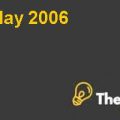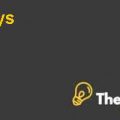CRAWFORD DEVELOPMENT CO.AND SOUTHEAST BANK OF TEXAS Case Study Solution
Introduction:
Real estate business is known to be the one where millions of investors and entrepreneur has earned profits and lost their lifetime investment. Among those investors and businessman, Andy Crawford was the one who has a record of never losing in his investments. He is the one who is famous as Texas developers who had never filed for bankruptcy. In addition to that, he was famous as the one who has earned more than $1 billion through real estate business in his career of more than 30 years. He is known to be the one who has survived in the worst financial and economic scenario and emerged as one of the finest entrepreneurs.
Crawford started his career as a contractor in the suburbs of Houston, Texas. By the end of 1972, he made developments in his business and became one of the top class businessmen in the town. By the end of 1990, he turned his company and made it a formal business and named his company as Crawford Development Co. The company was engaged in real estate activities and had the presence in a variety of assets that include retail shopping centers, office buildings, facilities related to industrial distribution along with residential neighborhoods. He was known to be the most lucky individual in the real estate business because he was the one who never faced any loss in his real estate business. According to him, luck was not the only factor in his success, in fact, his success is largely dependent upon his awareness and understanding of the risks that are linked in doing real estate business.
The other party involved in the case is the Southeast bank of Texas, formally known as SBT. It was not a big bank by the benchmarks set by the United States, however, because of its smaller size in terms of assets and the inherent adaptability permitted bank administrators to create closer contacts with clients and to be more precise in the deals they financed. Despite the fact that the bank had a locality in the mortgages compared to residents all over Texas, its prime share in the overall industry was in business and industrial loans and lending related to real estate.
Current scenario of the case:
During the start of the financial crisis in 2007 and 2008, a credit manager named as Peter Kloeckner confronts a land investment selection. He was in confusion to approve a loan that was a bullet in structure and asked by an investor who is known to be the luckiest person in terms of making an investment. A loan with bullet structure did not require any intermediate interest payments, thus principal and accumulated interest were repaid on the maturity date. The loan was requested by a developer who is now near to his retirement stage. In order to give his proper attention to his commercial and residential business, he went for downsizing and closed many of his business based in Houston. In order to start a commercial or residential business, he was in search for the financial institution that can provide financing for his business. The bank has the option to change the interest rate to secure themselves from any risks involved in the business, but doing so might affect their relationships with old clients.
The bank could even now change the premium rate on the loans to get sufficient payment for the danger it conveys, however the credit administrator realizes that doing so will change their long haul customer eagerness to undertake the advance.
Analysis:
Mitigating the risks linked with Lending:
A bank has numerous risks that must be overseen consciously, particularly since a bank utilizes a lot of leverage. Without viable management of its risks, it could undoubtedly go to be bankrupt. Conversely, if a financial institution is seen to be in a financially powerless position, investors will withdraw their investments, remaining banks won't give to it nor will the bank can offer debt securities in the monetary markets, which will compound the bank's financial condition. The trepidation of failure in banking sector was one of the most accurate reason for the 2007 – 2009 credit crunches and of other financial frenzies previously. For example, during 2008, the Royal Bank of Scotland known to be the biggest bank in the world, with stakes of £2.4 trillion, was brought around a loss of a minor £8 billion pounds, which shows 0.3% of its assets because it was leveraged to the hilt. In spite of the fact that banks offer large portions of the same risks as different organizations, the significant risks that particularly influence banks are liquidity risk, premium rate risks, credit default risks, and exchanging risks.
Using credit derivatives to reduce risk:
Credit derivatives are joint money related contracts with adjustments interfaced to a credit related occasion, for example, the default, credit minimization or chapter 11. A bank can use a credit derivative to exchange some or the majority of the credit risk of an advances and loans to an alternate group of investors or to go for bankruptcy. On a fundamental level, credit derivatives are instruments that empower banks to deal with their pool of credit risks more proficiently. The guarantee of these instruments has not gotten away by the controllers and policymakers. Credit derivatives and other complex budgetary instruments have helped in the advancement of a significantly more adaptable, productive, and thus flexible system for the economy than existed a quarter-century back. New instruments of risk scattering have empowered the biggest and most complex banks in their credit-allowing position to strip themselves of much credit risk by passing it to the investors or financial institutions with far less leverage. In spite of the development of the credit derivatives market, one knows minimal about how banks utilize credit derivatives to change their credit risks.
Protection in advance:
Before and in the middle of the execution of the loan, the bank ought to assess any possible risk that may cause the borrower to default on its loan commitment. These risks incorporate the capability of the borrower to reimburse the loan, and the authenticity and enforceability of the surety. In view of the bank's analysis and assessment of the potential risks, it will choose whether to issue the loan and what conditions and insurance measures ought to be stipulated in the loan understanding.
Concerning loans without any insurance, i.e. specifically credit loans, when the borrower is a business enterprise or a firm, the bank will go for a borrower with respect to its credit ratings in the market or its history of relationships with the bank. At times, if the bank considers essential, the borrower will need to demonstrate its capabilities by giving its Financials to the bank before the loan is issued.
CRAWFORD DEVELOPMENT CO.AND SOUTHEAST BANK OF TEXAS Harvard Case Solution & Analysis
It is simpler for the bank to know the borrower's condition with respect to its performance in the market if the borrower is a single person or entrepreneur, particularly a company that is listed on the stock exchange. But if banks need to give loans to the company with no such financial history, there is no way extensively to analyze an individual's financial position in the market. Local banks resolve this issue by making their own credit record of clients as a principle for assessing an individual's financial credibility.
Scrutinizing the borrower throughout the loan agreement:...................
This is just a sample partial case solution. Please place the order on the website to order your own originally done case solution.










